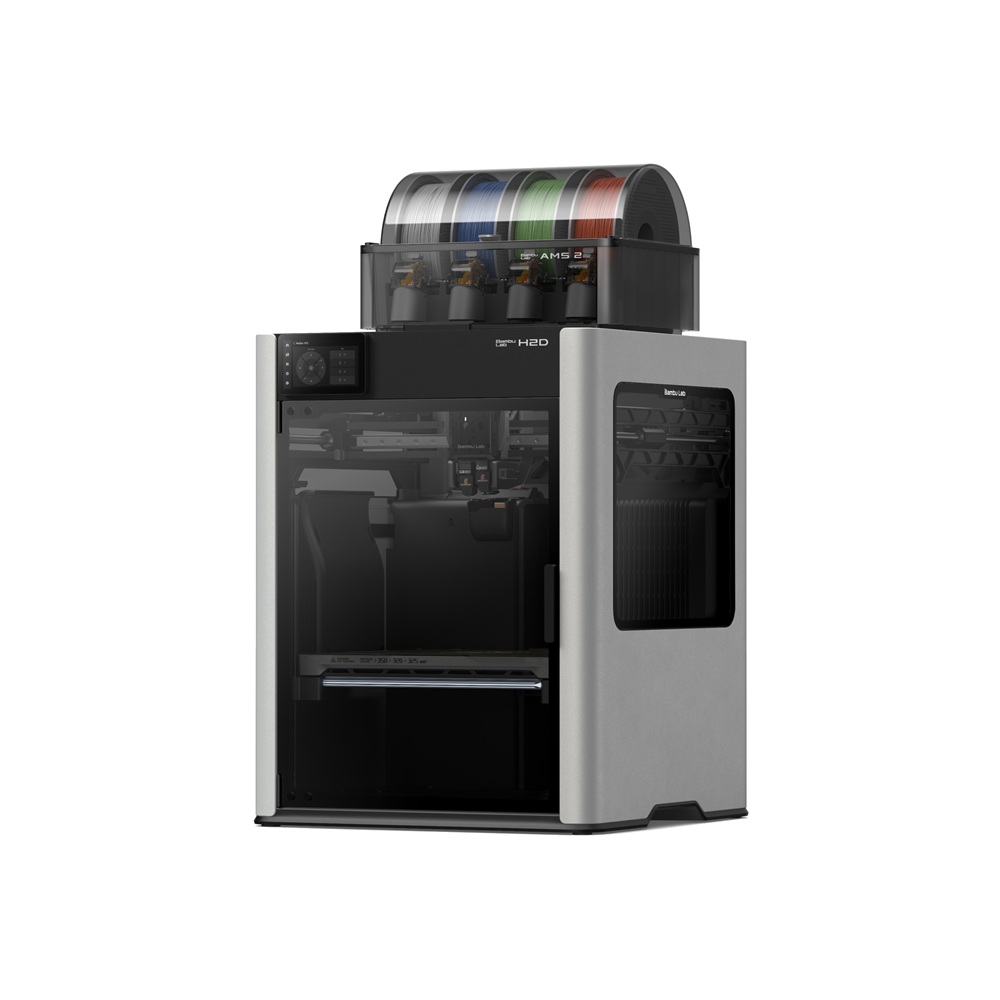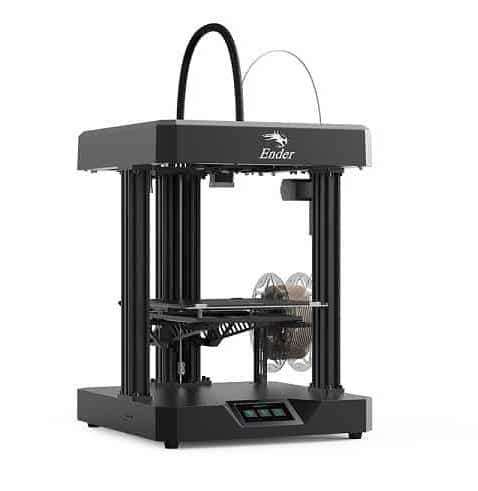Compare H2D vs Ender 7
Comparison between the best 3D printers
Choose the best 3D printer at the best price. The cheapest 3D printers are here.
Buy a 3D printer here with 3D Fila.
 |
 |
|
| Model | H2D |
Ender 7[BUY Ender 7] |
| Printing Material | Filament | Filament |
| Buy Filament for Bambu Lab H2D | Buy Filament forCreality 3D Ender 7 | |
| Estimated price | $1899,00 | $429,00 |
| Manufacturer | Bambu Lab | Creality 3D |
| Release Year | 2025 | 2021 |
| Print Volume [mm] | 350x320x325 | 250x250x300 |
| Printer Size [mm] | 492x514x626 | 430x460x570 |
| Weight [kg] | 42,3 | 17,2 |
| Power Loss Recovery | YES | YES |
| Enclosed printer | YES | NO |
| Bed Leveling | Automatic | Manual |
| Filament End Sensor | YES | YES |
| Bed type | Heated | Heated |
| Power supply system | Direct Drive | Bowden |
| Standard nozzle | 0,4 | 0,4 |
| Maximum Nozzle Temperature [°C] | 350 | 260 |
| Maximum Bed Temperature [°C] | 120 | 100 |
| Maximum printing speed [mm/s] | 600 | 250 |
| Filament holder | YES | YES |
| Camera for supervision | YES | YES |
| Recommended filaments | PLA, PETG, ABS, ASA, TPU, PVA, Nylon (PA) | PLA, PETG, Tritan, Flex, ABS |
| Recommended slicers | Bambu Studio | Cura, Simplify, Slic3r, IdeaMaker |
| Maximum Resolution [mm] | 0,01 | 0,1 |
| Processor | Creality CR-FDM V.2.4.S1_V101 32bits | |
| Display | Touchscreen 5'' | Display touchscreen 4,3'' |
| Power Supply | 110/220V / 350W | |
| Connectivity | Wifi, Bambu bus, Cartão SD | SD / USB |
| Operating systems | Windows, Mac, Linux | Windows, Mac, Linux |
| Date of registration in the system | 2025-03-31 | 2022-11-04 |
| Release date | 2025 | 2021 |
| Extra features | Bambu Labs H2D combines high-speed 3D printing with a chamber heated up to 65 °C, dual extrusion with automatic nozzle switching, an AMS for filament drying and exchange, and AI sensors that detect failures. It offers optional laser and digital cutting capabilities, features intelligent calibration through computer vision, vibration control, enhanced fire safety, and real-time camera monitoring. | Crealitys Ender 7 printer offers remarkable print speeds, utilizing CoreXY kinematics for precise and fast movement. With a 250x250x300mm build area, dual direct extruder, and custom hotend, the Ender 7 is capable of printing at high speeds, although quality may suffer on smaller prints. Assembly is relatively straightforward, but the machine is noisy and can get hot. Its true speed potential is most noticeable on larger prints, where it outperforms its competitors. |
| Support for multiple colors and materials (AMS and CFS) | YES | NO |
Notes * |
||
| Cost-benefit | 7 / 10 | 7 / 10 |
| Hardware | 8 / 10 | 2.4 / 10 |
| Tela | . | . |
| Print volume | 4 / 10 | 4 / 10 |
| Performance | 5 / 10 | 2 / 10 |
| [BUY Ender 7] |
Conclusion |
| In comparing the Bambu Lab H2D and the Creality 3D Ender 7, several key factors emerge that highlight their differences and suitability for various users. **Price and Value:** The H2D is significantly more expensive than the Ender 7. While the H2D offers advanced features and cutting-edge technology, the price differential raises questions about the cost-benefit relationship for casual users or hobbyists. The Ender 7, being more budget-friendly, appeals to beginners and those seeking a reliable printer without high investment. **Print Volume and Speed:** The H2D boasts a larger print volume, allowing for more substantial projects, alongside superior maximum printing speeds that significantly enhance productivity. In contrast, the Ender 7, while still capable of impressive speeds due to its CoreXY kinematics, may struggle in quality for smaller prints, making it less versatile for complex designs. **Technology and Features:** The H2D comes equipped with several high-end features such as automatic bed leveling, dual extrusion, and advanced AI sensors for quality control and fault detection. These attributes make it a solid choice for professional use or for those who prioritize print quality and functionality. Conversely, the Ender 7, while effective for basic tasks, lacks many of these sophisticated features and may require more manual intervention. **Build Quality and Design:** The H2D's enclosed design facilitates better thermal management and print quality, while its heavier build may indicate greater stability during operation. Alternatively, the Ender 7’s open-frame design makes it more accessible for modifications and upgrades but can expose it to environmental factors that affect print consistency. **User Experience:** The automatic leveling and smart features of the H2D promote user-friendliness, especially for those who may not be experienced with 3D printing. The Ender 7, while advantageous for its simplicity and ease of assembly, may involve a steeper learning curve, especially with aspects like manual bed leveling. In conclusion, the choice between the Bambu Lab H2D and the Creality 3D Ender 7 ultimately depends on the user’s specific needs and budget. The H2D represents a high-end investment for advanced users seeking top-tier features and performance, whereas the Ender 7 is an excellent entry-level printer that offers solid performance at a more accessible price point. Evaluating the intended use and available resources will guide potential buyers in making the right decision for their 3D printing endeavors. |

